|
Two weeks ago, my husband and I visited the Handwerksfest in Seefeld in Tirol, Austria. I mainly wanted to go as there should have been a gold embroiderer. Unfortunately, the weather was really bad and not all artisans were present. So, no gold embroiderer. But I did see a Federkiel-embroiderer and the even more ancient craft it replaced. Something I had never seen before. I have written about Federkielstickerei before, so do check out that blog post. Let's have a look at my new discoveries! First up is Federkielstickerei Seiringer. This is a small family business where both the father and the son are embroiderers. They were happy for me to take pictures and shoot some video footage. And I was able to ask some questions about the embroidery technique. Here you see Herr Seiringer work on a small piece of embroidery. The leather piece is fastened into an ingenious contraption that lets the embroiderer work with as straight a back and neck as possible. In this short video, you can see how the embroiderer makes a small hole with an awl in the leather and then feeds the stripped peacock feather through the hole. How this stripped peacock feather "yarn" gets produced exactly, is a trade secret. But I did ask how he prevented the strip from twisting during stitching. Herr Seiringer explained that the way he places his awl determines how the stripped peacock feather lies. That's pretty cool, don't you think?
Next up, we met Wilfried Weiss. He picked up tiny little pieces of metal with tweezers and positioned them onto a leather belt. We were fascinated by his work, and he started to talk a bit about his craft: the making of Zinnstiftranzen. To prevent the underbelly from getting hurt by a bayonet, knife or bullet, the men in the Alpine regions of Bavaria, Tyrol and Slovenia wore these thick, broad leather belts decorated with tin tacks. These belts first appeared in the late 17th-century and the designs became more elaborate as time went on. Alas, many belts were destroyed during the Napoleonic wars (1803-1815) when the metal was used for bullets. The technique completely vanished from memory and Federkielstickerei took over. Wilfried Weiss re-discovered the technique and now produces his own tin tacks to make the designs with. The design gets copied onto the leather belt and each hole of the design gets pricked. Then the tin tack gets put into the hole with the help of tweezers. The head of the tack stays visible on the front of the belt and forms the design. The 'leg' of the tack sticks out on the back and gets bent over so the tack is secured. Do check out Wilfried's website to see some beautiful examples of this lost art!
18 Comments
Today I am going to introduce a new book on Opus anglicanum to you. One of my students posted about it in the Medieval Embroidery Study Group. As the book is written in English, the language used by most people in the international embroidery scene, these books are too important to ignore. They have the potential to become gospel. At € 125 + shipping, the book isn't exactly a bargain. So, let's explore its contents together so that you can make an informed decision as to whether to buy it or not. The Bologna Cope: Patronage, iconography, history and conservation is edited by M.A. Michael and is the second volume in the series "Studies in English Medieval Embroidery". The book can be ordered through Brepols publishers. As the Bologna cope is held in an Italian museum, the book's chapters are mainly written by Italian scholars. But as the editor is from the UK, the book is published in English. Italy has many splendid medieval embroideries and a large body of literature about them. However, it is all published in Italian. Not a language most of us are fluent enough in. The book starts with a general introduction to the subject. Those of you who went to see the Opus anglicanum exhibition in the Victoria & Albert Museum a couple of years ago, probably remember the Bologna cope as it was displayed right at the entrance. This first chapter also briefly introduces us to a few other embroidered vestments held in Italy. Neither the iconography on these pieces nor their embroidery techniques are described. The pictures are mostly not detailed enough to fill in the blanks. The second chapter is by M.A. Michael himself and mainly deals with stylistic comparisons between the design of the cope and several other works of contemporary art. It does have a rather good overview of the historical sources containing references to the makers and dealers in Opus anglicanum. However, a lot remains unclear as the dealers can often not be confidently separated from the makers. If you want to know more about the makers of Opus anglicanum, this chapter is not going to add much. A large chapter is devoted to the iconography of the cope. It is illustrated with many pictures of the embroidery. However, as many of the scenes are quite large, the pictures are mostly not detailed enough to learn more about the embroidery. Only a hand full provide enough detail. The next two chapters will not be of interest to most embroiderers. One chapter deals with the possible references made to this cope in the inventories of the Friars Preachers in Bologna. And the other chapter deals with the publication and exhibition history of the cope. The 6th chapter sounds very promising: "Textiles and Embroidery in Italy between 1200 and 1300". Unfortunately, the majority is on the fabrics and not on the embroidery. And don't be fooled. We are not getting an overview of embroidered pieces made in Italy in the 13th-century. It only briefly explores the remaining textiles associated with Pope Benedict XI (donor of the Bologna cope) and his predecessor Boniface VIII. Are there no other 13th-century Italian embroideries? There are! They can be found in the Victoria & Albert Museum, in the Domschatz in Aachen, in the Keir Collection and in the Museo Episcopal Vic. As I don't read Italian very well, my research into Italian medieval embroidery is slow and far from complete. This chapter should have been an excellent opportunity to thoroughly introduce a non-Italian reading audience to the topic. But it is the last chapter that really has me fuming: "The conservation of the Bologna cope". This chapter should contain a section on the materials and techniques used to create the embroidery on the cope. It doesn't. We are only told that the embroidery is executed on two layers of linen. Count, please! The gold threads are made of silver gilt foil wrapped around a silken core. Composition of the metals? Spun directions? Colour of silken core? Thickness? Any details of the silken threads used for the split stitch embroidery? Length of stitches? The chapter does contain a few close-ups and a few macro images (no scale!). But that is all. What a missed opportunity.
All in all, this book is, at best, a coffee table book. The research essays are not brilliant. For the embroiderer, this book is a huge disappointment and a missed opportunity. No information is added compared to the catalogue entry in "English Medieval Embroidery" from 2016. Should you buy the book? Only if Opus anglicanum is really your thing and you have the cash to spare. Instead, save up for the publications of the Abegg Stiftung and perhaps take some German lessons? Literature Browne, C., Davies, G., Michael, M.A. (Eds.), 2016. English Medieval Embroidery: Opus Anglicanum. Yale University Press, New Haven. Michael, M.A. (Ed.), 2022. The Bologna Cope: Patronage, iconography, history and conservation. Studies in English medieval embroidery II. Harvey Miller, London. A couple of years ago, I saw the so-called Wolfgang's chasuble at the Diocesan Museum Regensburg (you can read my blog about my 2015 visit). It had this lovely embroidered cross with birds and a four-legged animal amidst scrolling foliage. Although the goldwork embroidery is quite damaged, it is clear that it was once a very high-quality piece of medieval goldwork and silk embroidery. Its design would make for a lovely (online) embroidery class. I've asked my husband to clean up one of the bird designs and this is what he came up with. The original embroidery was made shortly after AD 1050, probably in Regensburg. A royal residency at the time, Regensburg likely housed the royal workshops when the court was in residence. The way this embroidery, and indeed the whole garment, was made differs markedly from most contemporary pieces. Those pieces are usually all over embroidered and the embroidery is directly worked onto a precious silken fabric or a linen fabric. Good examples of these are the Imperial Vestments, the Uta chasuble and the vestments from Saint Blaise now held in St. Paul im Lavanttal. Many heyday Opus anglicanum vestments also fall into this category. Not so Wolfgang's chasuble. This one has a strip of separately worked embroidery adorning the precious silken vestment. This would become the way forward for the rest of the medieval period and beyond. It is essentially the birth of the orphrey. These smaller pieces of embroidery were far more manageable and could be prepared in advance. Goldwork embroidery could move out of the specially equipped royal workshops and into, probably smaller and simpler, commercial workshops in the emerging towns. But we can clearly tell that the process of 'how to make an orphrey' was not yet set in stone. In this case, the embroidery seems awfully complex when it comes to its backing fabrics. What had the embroiderer done? It started with a piece of natural coloured silk twill/samite on top of a fine linen. All goldwork embroidery (and probably the stem stitch outlines) was worked that way. Then the piece was backed again with an extra layer of linen before the fine silken split stitches were worked. Curious don't you think? I was told that you back your embroidery when the stitching is particularly heavy. That would be the goldwork and not the silk. Just imagine the sore fingers from pushing a fine needle with silk through three layers of fabric... But I have an idea why the extra layer of linen was added: stiffness. Later, orphreys were routinely backed by gluing recycled paper on the back or simply stiffening the back with a layer of glue. This design is now available as a self-paced online class. The class includes video instructions, a downloadable PDF with instructions and a full kit with authentic materials. You can order your class here.
When you live in the far south of Germany and you want to enjoy a really good cappuccino, all you need do is to cross Austria, drive up the Brenner pass and decent on the other side to enter Italy. The two-hour drive is a scenic one I particularly enjoy. Once on the other side, we stop at the pretty town of Sterzing. Its main street is lined with medieval townhouses in soft colours. Cafe Häusler is situated near a famous tower and serves the best cakes and coffee in town. But whilst these are very nice, it is of course not the true reason for visiting Sterzing. The real reasons were a church from the early 15th century and a castle dating to the early 12th century. Sterzing sits on one of the most important North-South routes in Europe (more specific: Augsburg in Germany to Venice in Italy). People, ideas and artisans have always travelled on this busy route and through its wealthy towns. What does this have to do with medieval embroidery? Quite a bit! On an earlier visit to the church of the Holy Spirit, I had seen something in the beautiful frescos painted by Hans von Bruneck in AD 1402. This time, I returned with my good camera to take a better picture. Do you see what captured my attention? Indeed, there are painted patterns in red on a golden background behind some of the saintly figures. Now that sounds familiar. I already knew that embroidered diaper patterns are in fact imitations of luxurious woven cloth that once decorated the walls of churches. These patterns can also be seen in painted pictures of the same time. But I had never before seen a painted basket weave pattern in red and gold on a fresco. When studying embroidery of a particular historical era it is always a good idea to have an eye for other contemporary artistic disciplines as well. After all, these embroiderers did not work in isolation. Often, painters provided them with their embroidery designs. Knowing the works of famous painters in the area where the embroideries under study originated can often provide stylistic links. Also, when you are familiar with pristine scenes, they can help you when studying badly worn embroidery. When you can identify a fragmentary scene, 'reading' the damaged embroidery becomes so much easier. And then there was castle Reifenstein. Its current owners, the family of Thurn und Taxis, have lovingly restored it and kept it in its late-medieval original state. You can easily walk the short distance from the town of Sterzing to the castle. Do take the bike lane and not the footpath. That one ends abruptly on the Autostrada. Whilst they do speak German in this part of Italy, it most definitely IS Italy! The castle has many lovely rooms and you will often be astonished that things have survived for more than 800-years. But two rooms in particular are of special interest to us embroiderers. There is this smaller room off the Kemenate. It was used by the women of the castle for all sorts of textile activities. The current display of spinning wheels and the like is not very old though. However, this is by far the brightest room in the whole castle. And wouldn't it be lovely to sit in one of the window seats and stitch? Unfortunately, I was not allowed to take a picture of the second room which is of interest to us embroiderers. Its walls are decorated with a very rare late-Gothic (made in AD 1498) fresco painting. It shows foliage in which exotic flowers, saints and people hide (see the bird catchers left of the small window?). Luckily, I found this picture on Wikipedia so that you can at least get an idea. Now why do these wall paintings resonate with me? I had seen a similar design before! By now you probably know that non-religious medieval embroidery has hardly survived. One of the most spectacular pieces is kept at Musee Cluny in Paris: a horse trapper. Its embroidery was made around AD 1330-1340 and shows foliage in which people hide. This was thus apparently a motive which was more often used in medieval art. It might well have been copied in embroidery for royal courts far more often than what we are aware of.
I hope you enjoyed coming for a real cappuccino with me :)! |
Want to keep up with my embroidery adventures? Sign up for my weekly Newsletter to get notified of new blogs, courses and workshops!
Liked my blog? Please consider making a donation or becoming a Patron so that I can keep up the good work and my blog ad-free!
Categories
All
Archives
July 2024
|
Contact: info(at)jessicagrimm.com
Copyright Dr Jessica M. Grimm - Mandlweg 3, 82488 Ettal, Deutschland - +49(0)8822 2782219 (Monday, Tuesday, Friday & Saturday 9.00-17.00 CET)
Impressum - Legal Notice - Datenschutzerklärung - Privacy Policy - Webshop ABG - Widerrufsrecht - Disclaimer
Copyright Dr Jessica M. Grimm - Mandlweg 3, 82488 Ettal, Deutschland - +49(0)8822 2782219 (Monday, Tuesday, Friday & Saturday 9.00-17.00 CET)
Impressum - Legal Notice - Datenschutzerklärung - Privacy Policy - Webshop ABG - Widerrufsrecht - Disclaimer



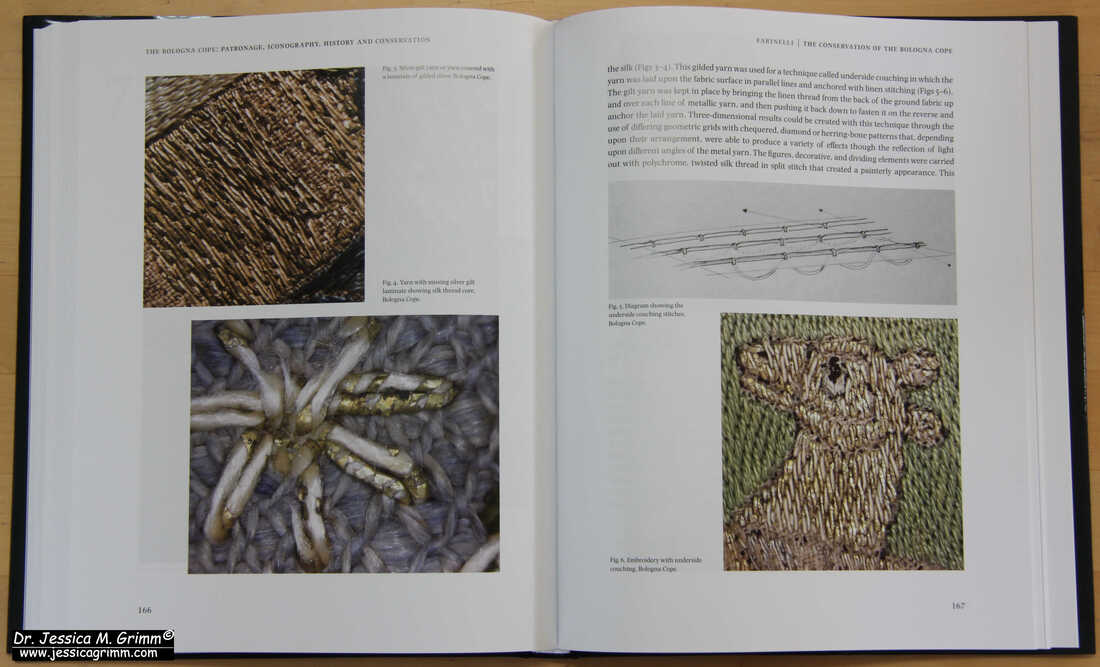
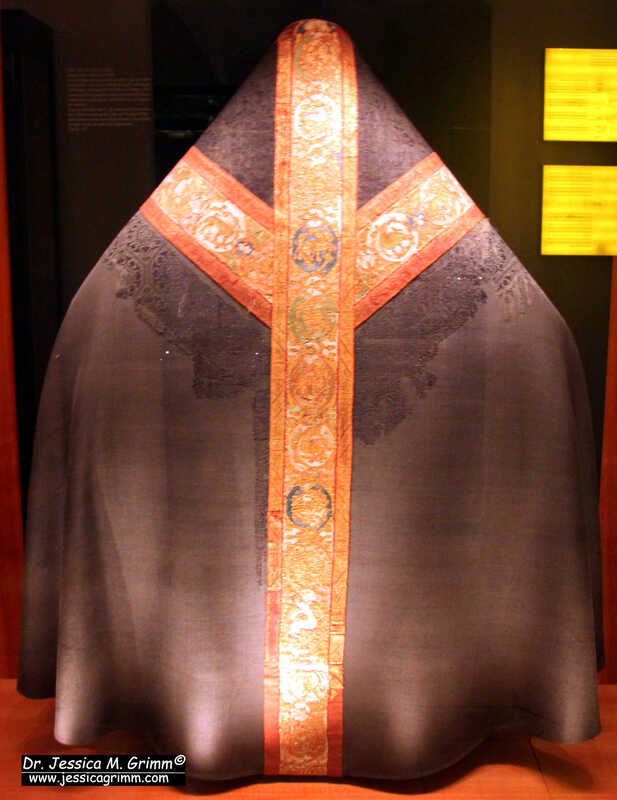
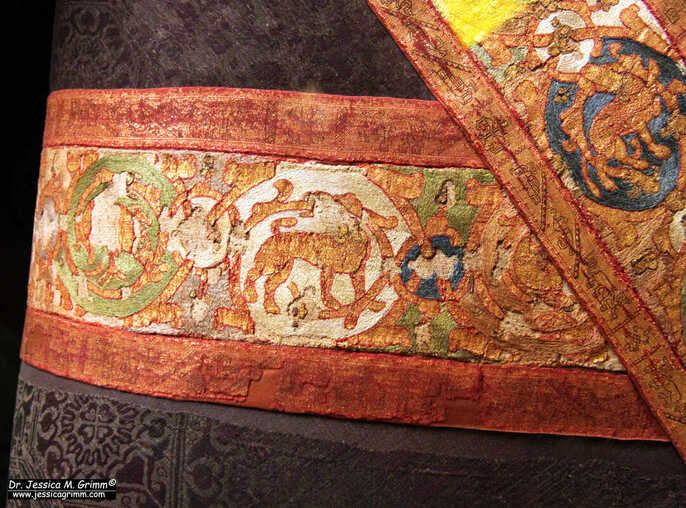
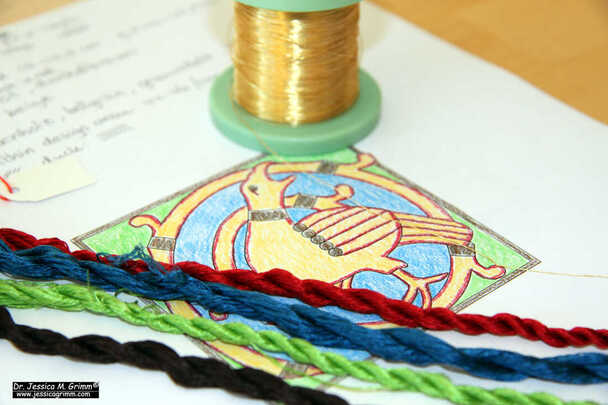
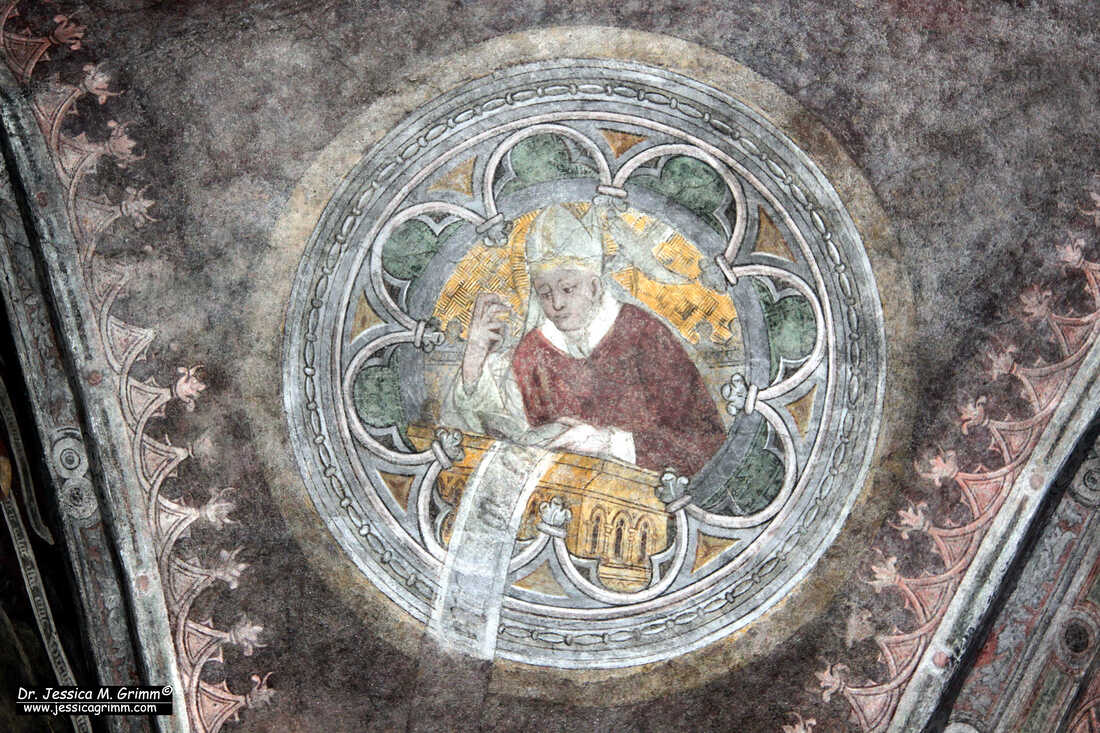

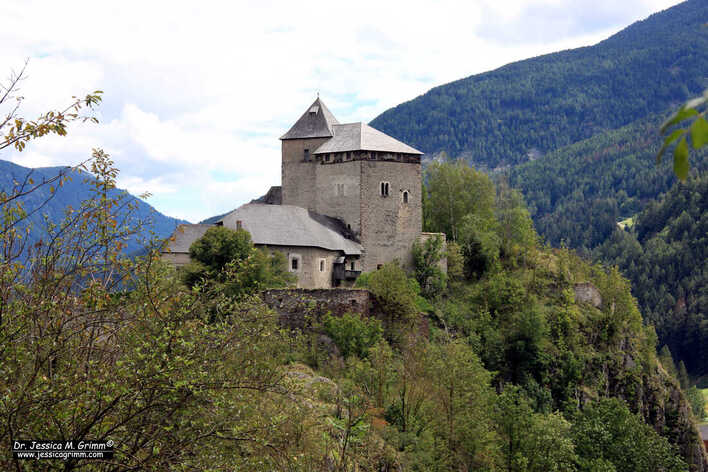
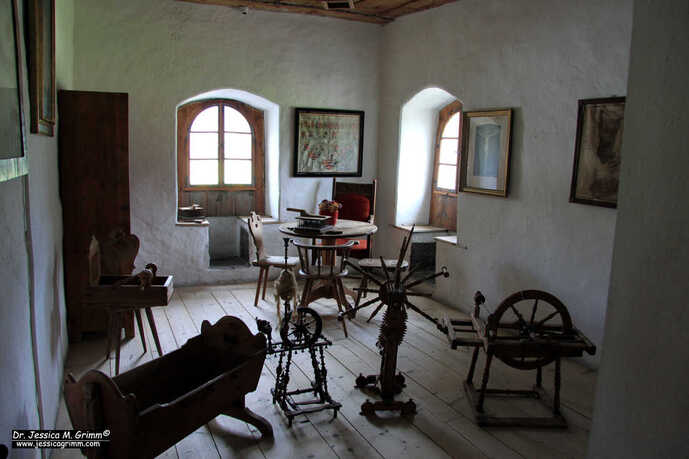
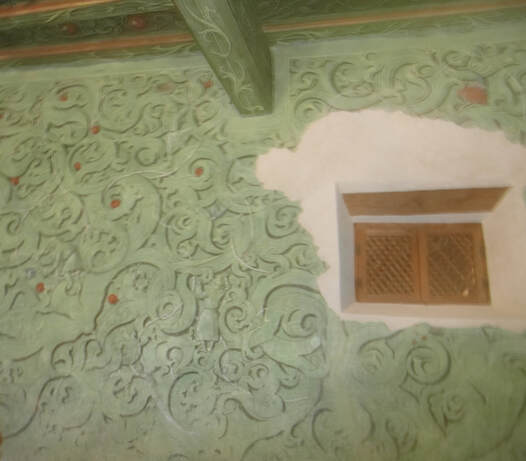
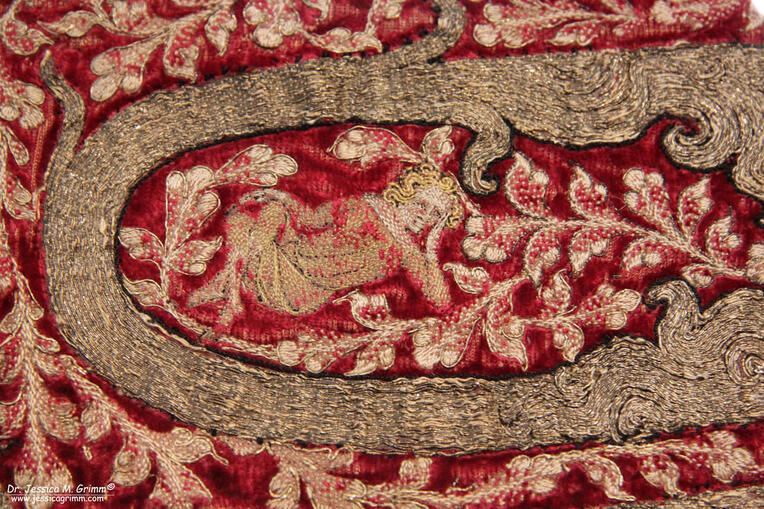





 RSS Feed
RSS Feed